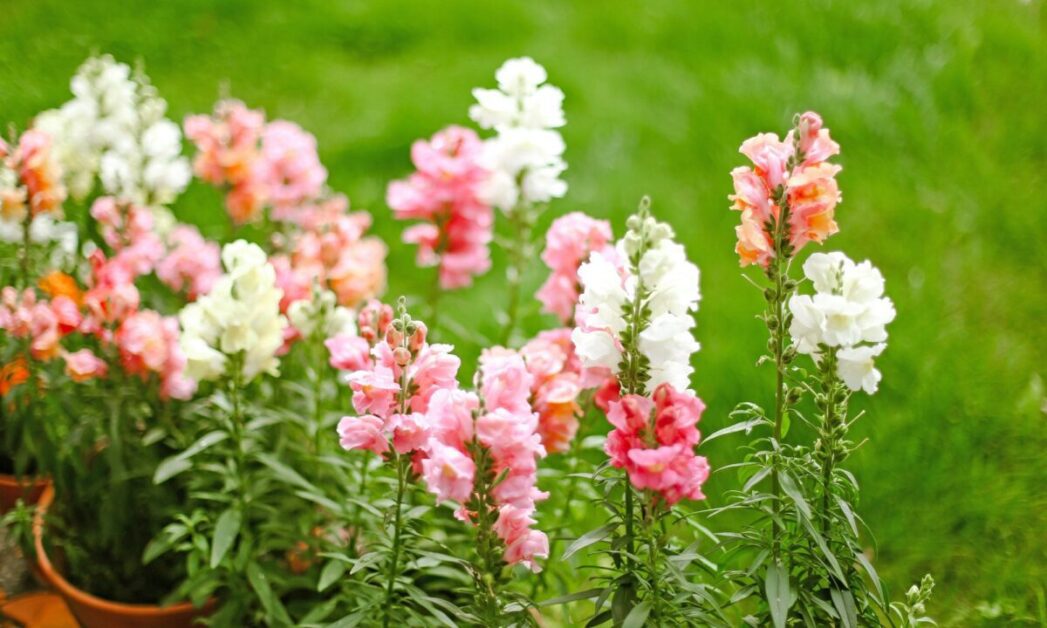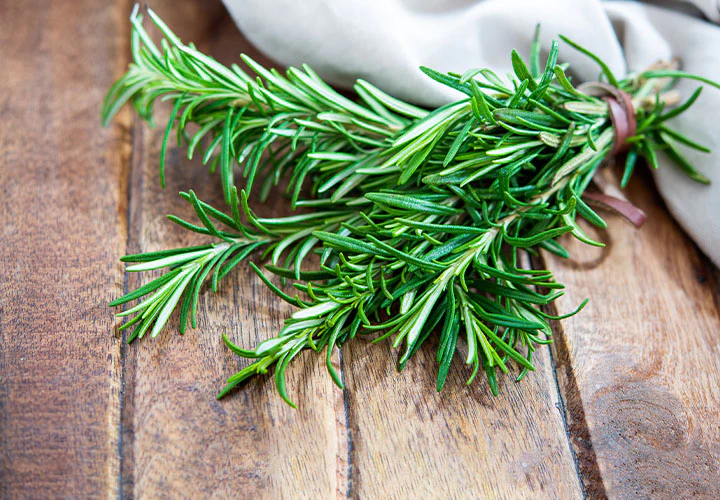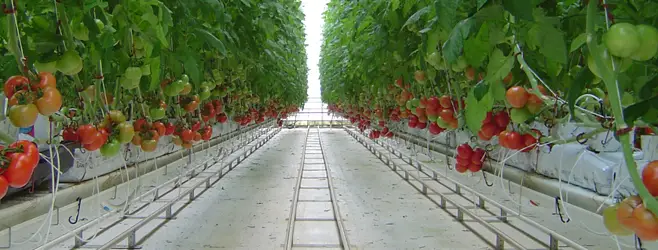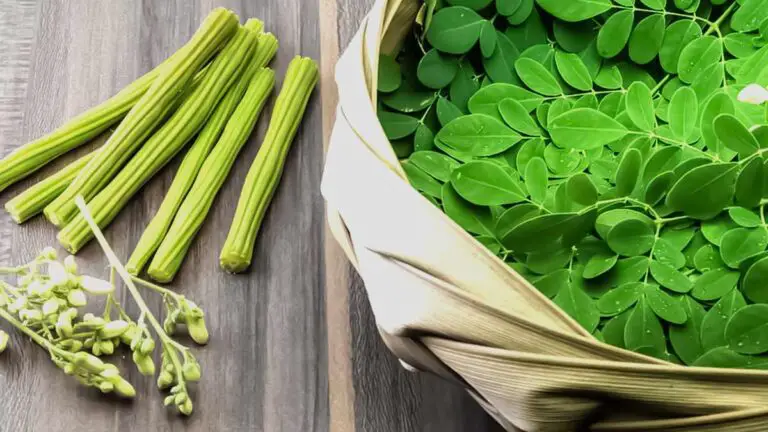Snapdragons Care: Growing Snapdragon Flowers
Snapdragons, with their whimsical blooms resembling dragon jaws, add a touch of enchantment to any garden. Have you ever marveled at these charming flowers and wondered how to care for them? From their intriguing name to their diverse colors and sizes, snapdragons are a delightful addition to any landscape. In this blog, we unveil the secrets to successfully growing and nurturing these captivating plants.
Our expert advice, backed by the latest horticultural insights, will guide you through the process of cultivating vibrant snapdragons with ease. Get ready to transform your garden into a colorful oasis and enjoy the beauty of these magical flowers blooming right at your doorstep!
Table of Contents
How to Choose the Right Location for Your Snapdragons
Selecting the right location for your snapdragons is crucial for their overall health and blooming success.
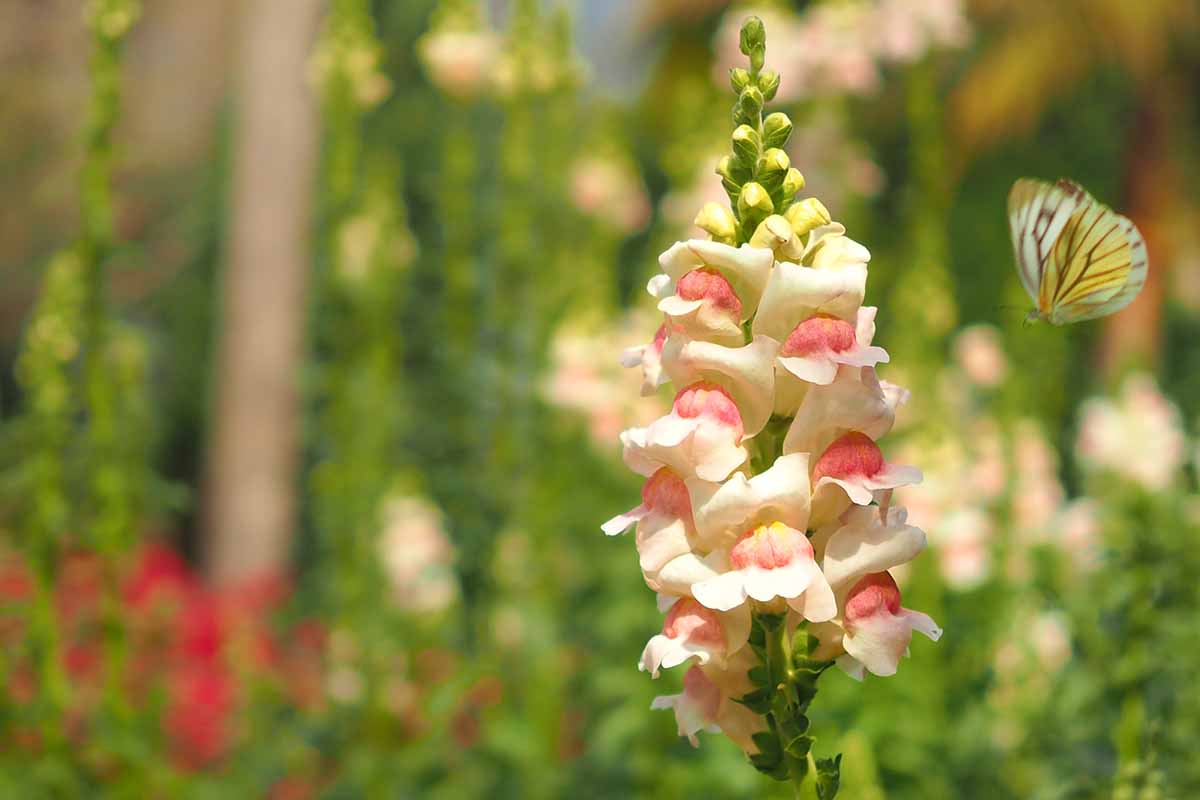
- Sunlight Requirements:
- Snapdragons thrive in full sunlight, requiring at least 6 to 8 hours of direct sunlight each day.
- Sunlight provides the necessary energy for growth and beautiful blooms.
- Well-Drained Soil:
- Plant snapdragons in well-draining soil.
- Avoid waterlogged roots by ensuring proper drainage.
- Protection from Wind:
- Consider planting snapdragons in a sheltered spot.
- Protection from strong winds prevents damage to delicate stems and flowers.
By strategically placing your snapdragons in an ideal location, you set them up for flourishing beauty throughout the growing season.
Selecting the Best Soil for Your Snapdragon Plants
When it comes to selecting the best soil for your Snapdragon plants, it’s crucial to ensure they have a well-draining medium that allows for proper root development.

- Rich organic matter: Snapdragons thrive in soil rich in organic matter, such as compost or aged manure, which provides essential nutrients for healthy growth.
- Optimal pH level: Aim for a slightly acidic to neutral pH level between 6.0 to 7.0, which promotes optimal nutrient uptake and overall plant health for Snapdragons.
- Good soil structure: Ensure good soil structure by incorporating perlite or vermiculite to improve aeration and drainage. This prevents waterlogged conditions that can lead to root rot, a common issue for Snapdragons.
- Avoid heavy clay soils: Heavy clay soils retain too much moisture, which can be detrimental to Snapdragons. Opt for well-draining soil mixes to prevent waterlogging and promote healthy root development.
- Select well-balanced soil mix: Choose a well-balanced soil mix that meets the specific needs of Snapdragons, providing the right combination of nutrients, pH level, and soil structure to support vibrant blooms and robust plant growth.
The folllowiing table explains about the different soil for snapdragon plants:
| Soil Type | pH Range | Drainage Rate | Organic Matter Content (%) | Sand (%) | Silt (%) | Clay (%) |
|---|---|---|---|---|---|---|
| Loamy Soil | 6.0-7.0 | Moderate to Good | 5-10 | 40-60 | 20-30 | 20-30 |
| Sandy Soil | 6.0-7.0 | Good | 1-3 | 70-90 | 5-15 | 5-15 |
| Clay Soil | 6.0-7.0 | Poor | 20+ | 20-35 | 20-35 | 45-60 |
| Silt Soil | 6.0-7.0 | Good | 5-10 | 20-40 | 40-60 | 20-40 |
I recently purchased the Viagrow Horticultural Vermiculite for my garden and flowers, and I must say, I’m highly impressed with the results! This product has truly elevated the quality of my soil and improved the overall health and growth of my plants.
First and foremost, I appreciate the convenient packaging and quantity provided. With 10 quarts (2.5 gallons) of vermiculite, I had enough to amend several pots and garden beds, ensuring that all my plants received the benefits of this excellent soil additive.
The vermiculite itself has a fine texture and is easy to mix into the soil. It helped to improve soil aeration and drainage, preventing waterlogged conditions that can lead to root rot. Additionally, the vermiculite helped to retain moisture in the soil, ensuring that my plants stayed hydrated, especially during hot summer days.
I noticed a significant improvement in the overall health and vitality of my plants after incorporating the Viagrow Horticultural Vermiculite into my gardening routine. My flowers seemed to thrive, producing more blooms and displaying richer colors than ever before. Even my vegetable plants showed increased vigor and productivity.
Overall, I highly recommend the Viagrow Horticultural Vermiculite to any gardener looking to improve soil quality and promote healthy plant growth. It’s a fantastic product that delivers excellent results, and I’ll definitely be purchasing it again for future gardening projects.
- Made in America: Viagrow Vermiculite is mined, heated, and packaged in the USA, supporting American crops and jobs.
- Natural soil amendment: Promotes moisture retention and aeration in potting mixes, leading to better root development, growth rates, and yields.
- Versatile: Can be mixed with various soil types and soilless media, including peat moss, mushroom compost, cactus soil, organic soil, bark, perlite, compost, coconut coir, and worm castings.
- Nutrient-rich: Naturally attracts and holds positively charged ions like potassium, magnesium, calcium, and ammonium, releasing these vital elements to plant roots.
- Suitable for various gardening methods: Ideal for container gardens, square foot gardening, raised bed gardens, greenhouse mixes, and hydroponic drip systems.
- Chunky texture: Some customers find the vermiculite to be chunky, which may not be suitable for all gardening preferences.
- Dusty: The product can be slightly dusty, which may require extra care during handling and storage.
- Limited instructions: The packaging provides minimal guidance on usage and storage, requiring users to rely on their knowledge or seek additional information.
- Texture preferences: Opinions on the texture vary among customers, with some preferring finer grades for certain applications.
Watering Tips for Healthy Snapdragons
Proper watering is indeed essential for maintaining the health and vibrancy of snapdragons. These delicate flowers thrive when moisture levels are consistent, but finding the right balance is crucial.
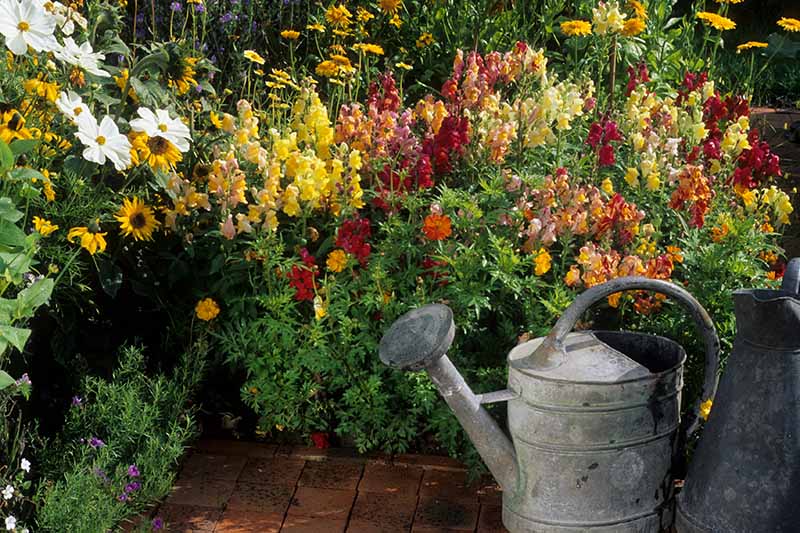
- Deep Watering: When you water snapdragons, aim to penetrate the soil deeply. This ensures that the water reaches the roots where it’s needed most. Shallow watering only moistens the surface and doesn’t provide adequate hydration.
- Base Watering: Water the snapdragons at the base of the plant, avoiding wetting the foliage. Wet leaves can lead to fungal diseases, so direct the water toward the soil. A gentle stream at the root zone is ideal.
- Soil Moisture Monitoring: Regularly check the soil moisture. Stick your finger into the soil about an inch deep. If it feels dry at that depth, it’s time to water. If it’s still moist, hold off.
- Adjusting for Weather: Be mindful of weather conditions. During hot and dry periods, snapdragons may need more frequent watering. Conversely, reduce watering during cooler or rainy spells.
Remember, snapdragons appreciate a consistent routine. By following these guidelines, you’ll keep those beautiful blooms flourishing! 🌸💧
Fertilizing Snapdragons: Dos and Don’ts
Fertilizing snapdragons is essential for healthy growth and abundant flowering. Here are some dos and don’ts to consider when fertilizing snapdragons:
Dos:
- Choose the right fertilizer: Use a balanced fertilizer with equal parts nitrogen, phosphorus, and potassium (N-P-K) for optimal growth. A 10-10-10 fertilizer is a good choice.
- Apply at the right time: Apply fertilizer when the snapdragons are actively growing, typically in the spring and early summer. Avoid applying fertilizer during dormancy or when the plants are not actively growing.
- Follow the manufacturer’s instructions: Always read and follow the manufacturer’s instructions when applying fertilizer to ensure proper application rates and avoid over- or under-fertilization.
- Side-dress with compost: Incorporate compost or aged manure into the soil around the snapdragons to provide additional nutrients and improve soil structure.
Don’ts:
- Over-fertilize: Avoid applying too much fertilizer, as this can lead to excessive growth and reduced flowering.
- Use high-nitrogen fertilizers: Snapdragons do not require high-nitrogen fertilizers, as they can lead to excessive vegetative growth and reduced flowering.
- Apply fertilizer directly to the plant: Avoid applying fertilizer directly to the plant, as this can cause burns and damage to the foliage.
- Fertilize during dormancy: Do not apply fertilizer during dormancy or when the plants are not actively growing, as this can lead to nutrient imbalances and reduced growth.
By following these dos and don’ts, you can ensure that your snapdragons receive the proper nutrients they need for healthy growth and abundant flowering in your garden.
Pruning Techniques to Encourage Growth

Use clean and sharp gardening shears to trim away any stems that are dead, damaged, or diseased.
Cut at a 45-degree angle, just above a set of leaves or a node. This promotes new growth and prevents stubs.
Pinch off spent flowers where the stem meets the main branch. This process is called deadheading.
By removing faded blooms, you redirect the plant’s energy toward producing more flowers.
While pruning is beneficial, don’t go overboard. Over-pruning can stress the plant and hinder its growth potential.
Strike a balance between maintaining neatness and allowing the plant to thrive.
Inspect the plant for crowded or crossing branches.
Remove excess branches to create an open and balanced structure.
Improved air circulation and sunlight penetration prevent diseases and encourage healthy growth.
Remember, proper pruning techniques not only keep your snapdragons looking tidy but also stimulate new growth and promote overall plant vigor. Happy gardening! 🌼🌿
Protecting Your Snapdragons from Pests and Diseases
Protecting your snapdragons from pests and diseases is crucial to ensure their health and longevity.
The following table explains about protecting snapdragons from pests and diseases:
| Pest/Disease | Preventive Measures | Quantitative Impact |
|---|---|---|
| 1. Aphids | – Use insecticidal soap or neem oil spray. | – Apply weekly for 2-3 weeks: 1-2 tsp of neem oil per gallon of water. |
| 2. Spider Mites | – Spray with water to remove and reduce populations. | – Apply weekly for 2-3 weeks: 1-2 tsp of liquid dish soap per gallon of water. |
| 3. Powdery Mildew | – Provide adequate air circulation. | – Apply fungicide: 1-2 tsp per gallon of water. |
| 4. Rust | – Remove and destroy infected plant parts. | – Apply fungicide: 1-2 tsp per gallon of water. |
| 5. Slugs and Snails | – Set up beer traps to attract and drown them. | – Place beer-filled traps near plants: 1-2 cups of beer per trap. |
Supporting Tall Snapdragons: Staking and Trellising

Individual stakes play a crucial role in supporting tall snapdragons. Place these stakes near the base of each plant.
Tie the main stem of the snapdragon to the stake as it grows. This prevents bending or toppling due to the weight of the plant or external factors like wind.
Staking ensures that the snapdragon maintains an upright posture and allows for better exposure to sunlight.
Trellises are ideal when you have multiple snapdragon plants in a row.
These structures allow the snapdragons to climb and intertwine as they reach for sunlight.
Trellising not only provides support but also contributes to improved air circulation around the plants.
Proper air circulation reduces the risk of diseases and promotes overall healthy growth.
Remember, whether you choose staking or trellising, providing the necessary support ensures that your snapdragons stand tall and thrive! 🌼🌿
Understanding Different Varieties of Snapdragons
Snapdragons, scientifically known as Antirrhinum, come in a wide array of varieties, each with its unique characteristics and appeal. These beautiful flowering plants are categorized based on their height, flower size, and color variations.
| Variety | Characteristics | Advantages | Disadvantages |
|---|---|---|---|
| Rocket Series | – Tall spiky blooms | – Impressive height and visual impact | – May require staking for support |
| Chantilly Series | – Delicate and ruffled petals | – Elegant appearance | – May be less heat-tolerant |
| Madame Butterfly | – Double-flowered blossoms resembling butterfly wings | – Unique and eye-catching | – May need deadheading to maintain appearance |
| Sonnet Series | – Compact plants ideal for borders and containers | – Perfect for smaller spaces | – Limited height; may not stand out in larger landscapes |
| Potomac Series | – Vibrant hues for adding a pop of color to any garden landscape | – Bright and cheerful | – May require regular deadheading to prolong flowering |
| Admiral Series | – Group I single blossoms in various colors | – Extremely early bloom | – Stalks may need staking |
| Aroma Series | – Strongly fragrant tall summer (Group IV) types | – Ideal for cutting due to strong, upright stems | – Some varieties may require support |
| Black Prince | – Deep green leaves with dark crimson and purple flowers | – Striking foliage contrast | – Not actually black in color; may not fit all color schemes |
Remember that snapdragons are hardy in USDA zones 7-10, attract pollinators, and are generally non-toxic to humans and pets. When choosing snapdragon varieties, consider your garden space, color preferences, and overall aesthetic goals. Whether you opt for classic charm or modern hybrids, these versatile flowers will add beauty and color throughout the growing season. Happy gardening! 🌼🌸
Managing Temperature and Sunlight for Optimal Growth
Snapdragons prefer moderate temperatures between 60°F and 75°F.
Ideal planting times are spring and fall.
Be cautious during extreme heat or cold—protect them accordingly.
Snapdragons thrive in full sunlight but can tolerate partial shade.
Aim for at least 6 hours of direct sunlight daily.
Insufficient sunlight may lead to leggy growth and fewer blooms.
If temperatures exceed 80°F, provide shade during the hottest part of the day.
Prevents stress and wilting.
In cooler climates, shield snapdragons from frost to protect delicate blooms and foliage.
Remember, a balanced combination of temperature and sunlight will help your snapdragons flourish beautifully! 🌼🌞
Propagating Snapdragons: Seeds vs. Cuttings
Propagating snapdragons can be done through both seeds and cuttings, each method having its own advantages and considerations:
Seeds:
- Cost-effective: Growing snapdragons from seeds is generally more cost-effective than purchasing new plants or cuttings.
- Variety: Seeds offer a wide range of varieties and colors to choose from, allowing for greater diversity in your garden.
- Germination time: Snapdragons grown from seeds may take longer to reach maturity compared to those propagated from cuttings.
- Propagation process: Sowing seeds requires proper conditions such as adequate moisture, warmth, and light for germination to occur successfully.
Cuttings:
- Faster growth: Snapdragons propagated from cuttings tend to establish and grow faster than those grown from seeds.
- Genetic replication: Cuttings provide an exact genetic replica of the parent plant, ensuring consistency in flower color and characteristics.
- Propagation success: Rooting cuttings can be more challenging than germinating seeds, requiring proper techniques such as using rooting hormone and maintaining optimal humidity levels.
- Limited availability: Availability of suitable cutting material may be limited, especially if you have a specific variety you wish to propagate.
In summary, choosing between propagating snapdragons from seeds or cuttings depends on factors such as time, cost, variety preference, and propagation success rates. Seeds offer cost-effectiveness and variety but require patience for germination, while cuttings provide faster growth and genetic replication but may require more effort in rooting. Consider your preferences and gardening goals when deciding which method to use for propagating snapdragons in your garden.
Review of Garden Safe Take Root Rooting Hormone
I recently had the opportunity to try out the Garden Safe Take Root Rooting Hormone, and I must say, I am thoroughly impressed with its performance.As someone who enjoys gardening and propagating plants, I was excited to give this product a try. The instructions were straightforward: moisten the plant cutting, stir the cut end in the powder, remove excess rooting hormone, and plant. I followed these steps diligently, and the results were remarkable.
One of the plants I experimented with was a fiddle leaf fig, known to be challenging to propagate. However, with the Garden Safe rooting hormone, the process was surprisingly easy. Within just a week, I noticed roots starting to form, and now, a few months later, I have a beautiful new fiddle leaf fig plant thriving in my home.What impressed me the most about this product is its effectiveness in promoting root growth. Not only did it accelerate the rooting process, but it also ensured that the newly propagated plants developed strong and healthy root systems.
Overall, I highly recommend the Garden Safe Take Root Rooting Hormone to fellow gardening enthusiasts. It’s a reliable tool for growing new plants from cuttings, and it’s sure to enhance your gardening experience. Give it a try—you won’t be disappointed!
- Promotes rooting: The rooting hormone facilitates the development of roots on cuttings, aiding in the successful propagation of new plants.
- Versatility: Works with a wide range of popular home, garden, and greenhouse plant varieties, including African violets, roses, poinsettias, philodendrons, geraniums, coleus, and woody ornamentals.
- Easy application: The powder form makes it simple to apply to cuttings. Users just need to moisten the plant cutting, stir the cut end in the powder, remove excess hormone, and plant.
- Active ingredient: Contains indole-3-butyric acid, which is similar to the natural root hormone found in plants, promoting healthy root development.
- Cost-effective: Provides an affordable solution for multiplying plant supply and sharing garden favorites with others.
- Eco-friendly: Made from natural ingredients, making it safe for the environment and reducing plant waste.
- Effective results: Many users have reported successful propagation of plants, including challenging varieties like fiddle leaf figs, with noticeable root growth within a short period.
- Availability: The product may be currently unavailable or out of stock, leading to inconvenience for potential buyers.
- Packaging: While the packaging is eye-catching, some users have expressed concerns about the durability or effectiveness of the container.
- Liquid volume: The liquid volume may not be sufficient for large-scale propagation projects, requiring users to purchase multiple containers for extensive use.
- Sturdiness: Some users have noted that the product’s sturdiness could be improved, possibly affecting its longevity or ease of use over time.
- Specificity of use: While effective for most popular plant varieties, there may be limitations in its effectiveness for certain niche or uncommon plant species.
Overwintering Snapdragons: Tips for Cold Weather Care
Overwintering your snapdragons is essential for their survival and future growth. Here are some key tips to ensure your snapdragons weather the cold months successfully:
- Insulation and Protection:
- Mulch around the base of your snapdragons to provide insulation. A layer of organic mulch (such as straw or shredded leaves) helps regulate soil temperature and protects the roots.
- Consider covering your snapdragons with protective materials like burlap or frost cloth during extreme cold spells. This shields them from harsh temperatures and frost.
- Reduced Watering:
- Decrease watering frequency during winter. Overly wet soil can lead to root rot.
- Water only when the soil is dry to the touch. Aim for a balance between moisture and avoiding waterlogged conditions.
- Air Circulation:
- Ensure adequate air circulation around the plants. Proper airflow prevents moisture buildup.
- Stagnant, damp conditions can encourage fungal diseases. Trim any dead or crowded foliage to improve airflow.
- Temperature Monitoring:
- Monitor temperature fluctuations in your garden. Protect snapdragons during sudden drops in temperature.
- If frost is expected, cover them overnight to prevent damage to delicate blooms and leaves.
Remember, thoughtful care during winter ensures that your snapdragons will thrive and greet you with vibrant blooms when spring arrives! 🌼❄️
Troubleshooting Common Issues with Snapdragons
If your snapdragons are not performing as expected, it may be due to common issues that can be easily addressed.
- Yellowing Leaves:
- Nutrient Deficiency: Consider a balanced fertilizer (especially nitrogen or iron).
- Spotted or Discolored Foliage: Watch out for fungal or bacterial diseases.
- Proper spacing, good airflow, and avoiding overhead watering can prevent issues.
- Wilting or Drooping:
- Underwatering: Ensure consistent soil moisture (especially in hot weather).
- Inadequate Sunlight: Snapdragons need at least 6 hours of sunlight daily.
- Stunted Growth or Poor Health:
- Inspect for root-bound conditions in pots or soil compaction in the garden.
- Address these issues promptly for healthier snapdragons.
Happy gardening, and may your snapdragons thrive! 🌸🌿🌞 .
Enhancing Flower Production: Deadheading Snapdragons
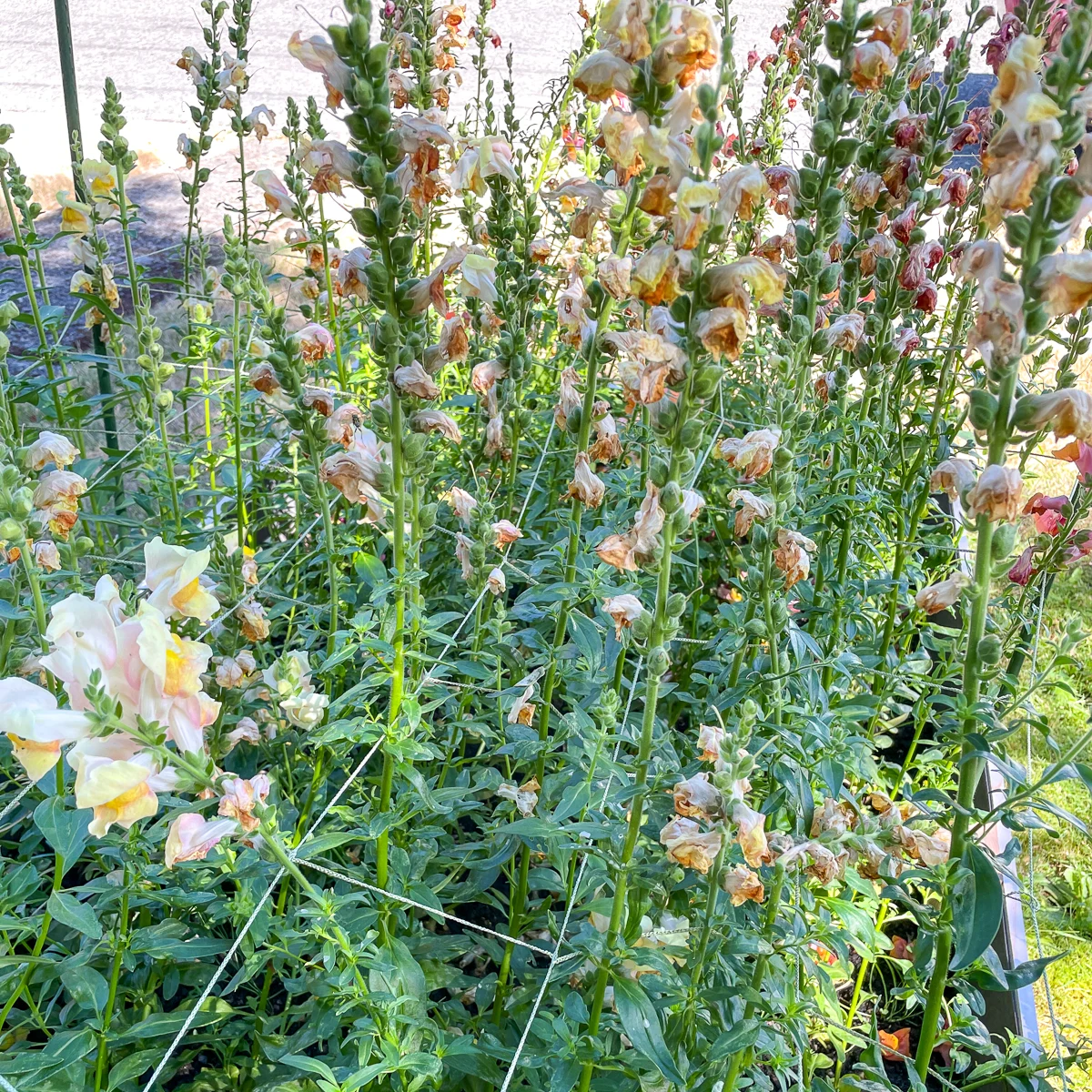
By removing spent blooms, you redirect the plant’s energy toward producing new flowers.
Snapdragons focus on blooming rather than setting seeds.
Neater Appearance: Regular deadheading results in a tidier display of blooms.
Extended Flowering Period: Continuous deadheading prolongs the blooming season.
Snip faded flowers back to a set of strong, healthy leaves or stems.
This prevents disease and pest issues from decaying flower heads.
Remember, consistent deadheading keeps your snapdragons looking vibrant and ensures a colorful garden throughout the growing season! 🌼🌸
Companion Planting with Snapdragons for a Thriving Garden
When selecting companion plants for your snapdragons, it’s important to consider species that not only complement the vibrant colors and unique shape of your snapdragons but also offer mutual benefits in terms of pest control, soil health, and overall garden vitality.
The following table explains about the different companion planting with snapdragons for a thriving garden:
| Companion Plant | Benefits | Quantitative Impact |
|---|---|---|
| 1. Marigolds | – Pest repellent properties. | – Plant marigolds every 6-8 inches. |
| – Attract beneficial insects. | – Coverage area: 1 marigold per 4 sq ft. | |
| 2. Nasturtiums | – Deters aphids, whiteflies, and squash bugs. | – Plant 2-3 nasturtiums per square foot. |
| – Attract predatory insects. | – Coverage area: 1 nasturtium per sq ft. | |
| 3. Dill | – Attracts pollinators like bees and butterflies. | – Plant dill every 12 inches. |
| – Deters pests like aphids and spider mites. | – Coverage area: 1 dill plant per sq ft. | |
| 4. Alyssum | – Attracts hoverflies, which prey on aphids. | – Plant alyssum every 6-8 inches. |
| – Improves soil drainage and aeration. | – Coverage area: 1 alyssum per 4 sq ft. | |
| 5. Borage | – Enhances flavor and growth of nearby plants. | – Plant borage every 12 inches. |
| – Attracts pollinators like bees and beneficial insects. | – Coverage area: 1 borage plant per sq ft. |
Creating Stunning Arrangements with Snapdragon Cut Flowers
Snapdragons are popular choices for cut flower arrangements due to their vibrant colors and unique shape.
- Mix sizes and colors: When arranging Snapdragon cut flowers, mix different sizes and colors for a dynamic display. Pair tall varieties with shorter ones to add dimension, and incorporate a variety of hues for a visually appealing bouquet.
- Add complementary foliage: Enhance Snapdragon arrangements by mixing in complementary foliage or additional blooms for added texture and interest. Greenery such as eucalyptus or baby’s breath can serve as excellent fillers, providing a backdrop that allows the Snapdragons to shine.
- Experiment with combinations: Experiment with different combinations of Snapdragons, foliage, and additional blooms to find what best suits your style and preferences. Try various arrangements until you achieve the desired look, creating beautiful displays that are sure to impress.
Harvesting Snapdragon Seeds for Future Planting

Harvesting and storing snapdragon seeds is a rewarding process that allows you to preserve your favorite varieties and grow new plants. Let’s break it down step by step:
- Wait for Maturity:
- Allow the seed pods on your snapdragons to turn brown and dry on the plant.
- Fully matured pods are ready for harvesting.
- Gently Pluck the Pods:
- Once the pods are dry, pluck them off the plant.
- Place them in a paper bag to continue drying indoors for a few weeks.
- Extract the Seeds:
- As the seed pods dry further, they’ll start to split open.
- Carefully extract the small black seeds from the pods.
- Proper Storage:
- Spread the seeds out on paper and let them dry in a cool, dry area away from direct sunlight for a day or two.
- Store the seeds in an airtight container in a cool, dark place.
- Label them with the variety and year harvested for easy identification.
By following these steps, you’ll have a stash of snapdragon seeds ready for planting when the next growing season arrives! 🌼🌱
Watch video for more information:
FAQ
Can I harvest seeds from any type of snapdragon plant?
Yes, you can harvest seeds from any type of snapdragon plant, but it is recommended to choose plants that exhibit desirable traits for future planting.
When is the best time to harvest snapdragon seeds?
The best time to harvest snapdragon seeds is when the seed pods have turned brown and dry on the plant.
How should I store harvested snapdragon seeds for future planting?
Store harvested snapdragon seeds in a cool, dry place in a paper envelope or container labeled with the plant variety and the date of harvest.
How long can snapdragon seeds be stored before planting?
Snapdragon seeds can be stored for up to 2-3 years before planting, as long as they are kept in a cool, dry environment.
Do snapdragons self-seed in the garden?
Yes, snapdragons are known to self-seed in the garden, but harvesting seeds allows you to control where new plants will grow and ensure genetic diversity in your garden.
Can I share harvested snapdragon seeds with other gardeners?
Yes, you can share harvested snapdragon seeds with other gardeners to promote the cultivation of these beautiful flowers in different gardens.
Should I stratify snapdragon seeds before planting?
Snapdragon seeds do not require stratification before planting, as they are typically sown directly into the soil or started indoors without any special treatment.

Studied Agricultural Engineering-Plant Protection at University of California, Davis.
Head of Content writing team at Southelmontehydroponics.com

